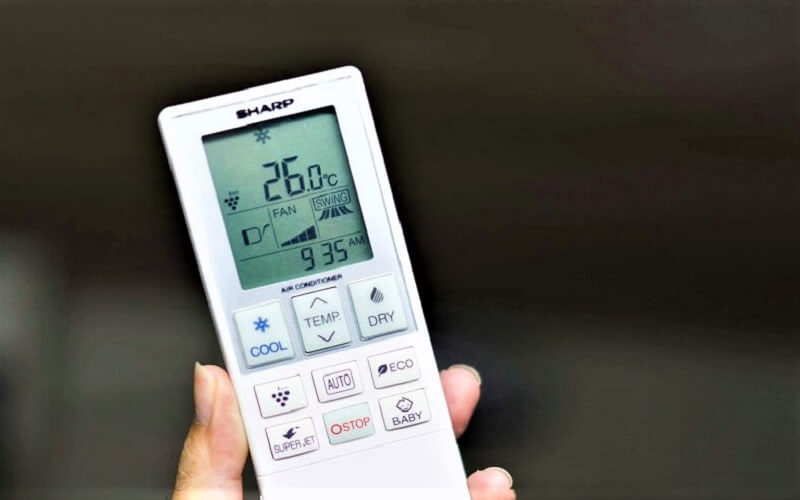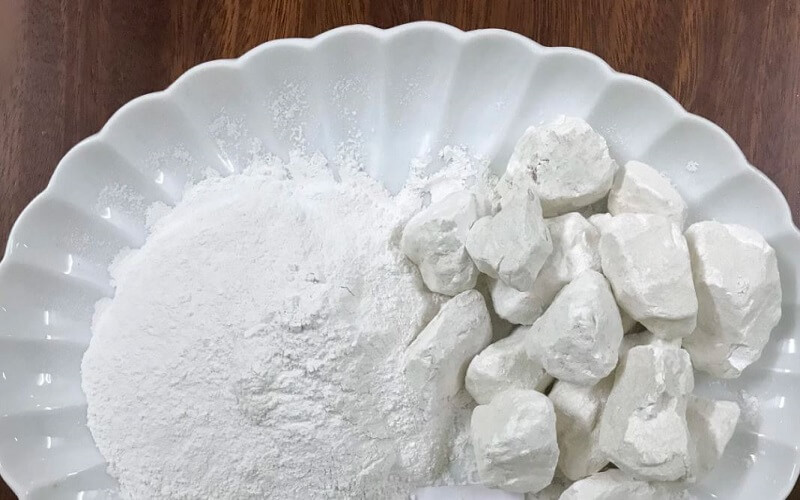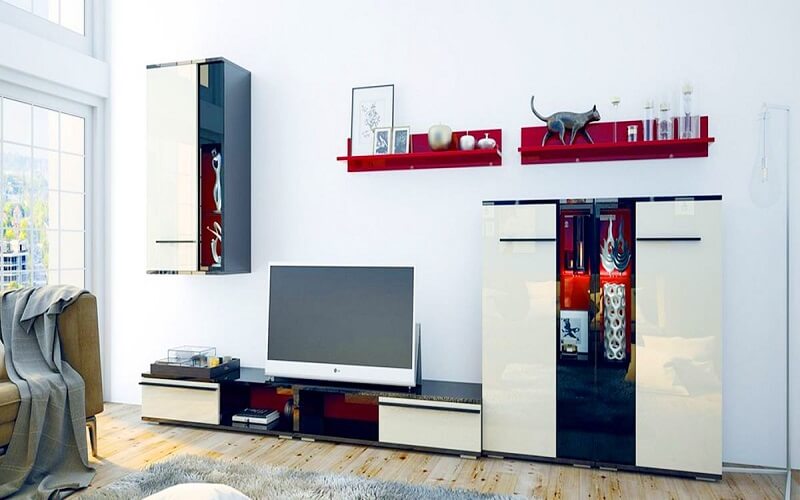With the increased humidity that comes with rainy weather, using air conditioning or a cooling system can help balance your living space. But which mode will effectively dehumidify and save energy? This is a common dilemma for consumers, so let’s explore the answer through the following article.
See also: What is the most suitable air conditioner for your home?
1. Choosing the Right AC Mode for Humid Rainy Days
Most air conditioners or cooling systems have a dehumidification function similar to dedicated dehumidifiers, which is especially useful during humid rainy, hot, or muggy weather. Among the various modes available, there are two in particular that help balance the indoor air while also being energy-efficient:
 Use Dry Mode (indicated by a water droplet icon) to reduce humidity
Use Dry Mode (indicated by a water droplet icon) to reduce humidity
First, there’s Dry Mode, which is usually indicated by a water droplet icon in the mode settings. This mode runs for about 3-5 minutes and then rests, helping to save energy. It blows air at a gentle speed, gradually cooling the air. The moist air encounters the colder environment of the cooling coils, causing the moisture to condense and giving you a less chilly feel.
See also: 12 simple yet effective home dehumidification methods
 Preset the cooling mode to a temperature of 25-27°C (77-80°F) for effective dehumidification
Preset the cooling mode to a temperature of 25-27°C (77-80°F) for effective dehumidification
Secondly, you can preset the cooling mode to a temperature of 25-27°C (77-80°F). This setting effectively dehumidifies the room, and for two-way air conditioners, there is a dedicated dehumidification mode. Simply activate this mode and adjust the temperature to the highest setting.
 For two-way air conditioners, use the dedicated dehumidification mode
For two-way air conditioners, use the dedicated dehumidification mode
However, avoid setting the temperature too low, as the air may become uncomfortably cold, especially during muggy weather. Additionally, you can turn on the fan mode at the highest speed for 30 minutes to circulate the air and dry out the room.
See also: Easy fixes for a leaking air conditioner
2. Other Ways to Reduce Indoor Humidity
Wipe the Floors and Keep Doors Closed
 Keep your home well-ventilated by regularly wiping the floors and closing the doors
Keep your home well-ventilated by regularly wiping the floors and closing the doors
Regularly wiping the floors with a dry cloth and keeping the doors and windows closed during unpredictable weather will help maintain good ventilation in your home. This practice reduces indoor humidity and prevents outdoor moisture from seeping in. On rainy days, it’s advisable to keep the doors closed and wipe down the floors to keep them clean and free from excess moisture.
Use Quicklime (Calcium Oxide)
 Quicklime is known for its excellent moisture-absorbing properties
Quicklime is known for its excellent moisture-absorbing properties
Quicklime, or calcium oxide, is renowned for its moisture-absorbing qualities, making it ideal for combating damp floors. Place quicklime in a bucket and position it in a corner of the room, and it will effectively draw moisture from the air, keeping your space dry. The amount of quicklime required depends on the level of humidity in your home, so adjust accordingly.
Use Charcoal Briquettes
 Charcoal briquettes can be reused by drying them in the sun
Charcoal briquettes can be reused by drying them in the sun
Charcoal briquettes share a similar moisture-absorbing capability to quicklime. Place a bucket of charcoal briquettes in damp areas of your home, and they will work to purify and dehumidify the air, creating a pleasant indoor environment. Additionally, charcoal briquettes can be reused by drying them in the sun and then using them again.
Use a Hair Dryer
 Use a hairdryer to dry hidden or hard-to-reach areas
Use a hairdryer to dry hidden or hard-to-reach areas
Hidden or enclosed spaces in your home are prone to moisture buildup. Using a hairdryer to dry these areas once will help reduce moisture and lower the overall humidity in the room. This practice keeps the space well-ventilated and prevents excessive moisture, which can lead to mold growth and reduce the lifespan of electronic devices and wooden furniture.
Protect Your Electronics from Moisture
 Keep electronic devices at least 1 meter above the ground and 10-15 cm away from walls
Keep electronic devices at least 1 meter above the ground and 10-15 cm away from walls
Humid weather can lead to dampness in the air, which may cause electronic devices to rust or malfunction. If the humidity is too high, it can even result in dangerous electrical shorts or fires.
To prevent these issues, it’s recommended to place electronic devices at least 1 meter above the ground and maintain a distance of 10-15 cm from walls to avoid electrical leaks. Additionally, operate the devices for a few hours each day, as they will generate heat and effectively reduce moisture in the air.
The above tips on adjusting your air conditioner settings and other methods will help you effectively dehumidify your space while saving energy. We hope this article has provided you with valuable and interesting insights.






































